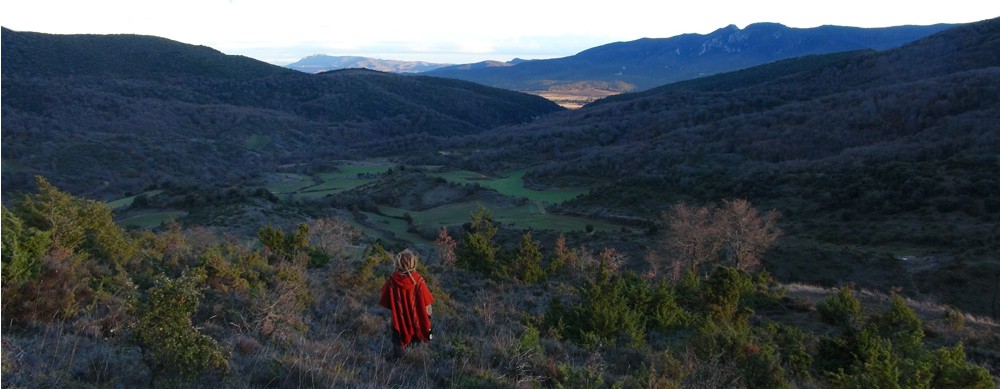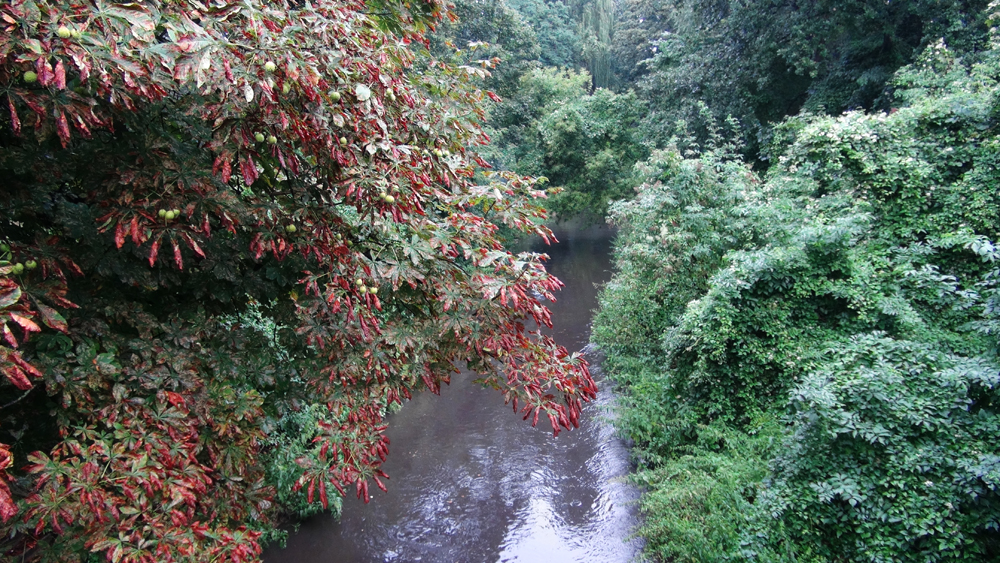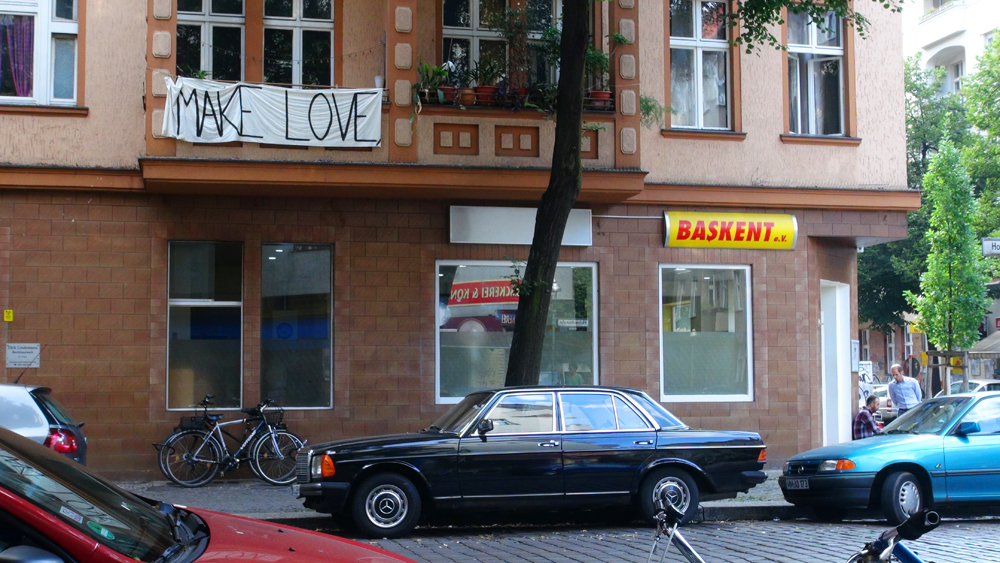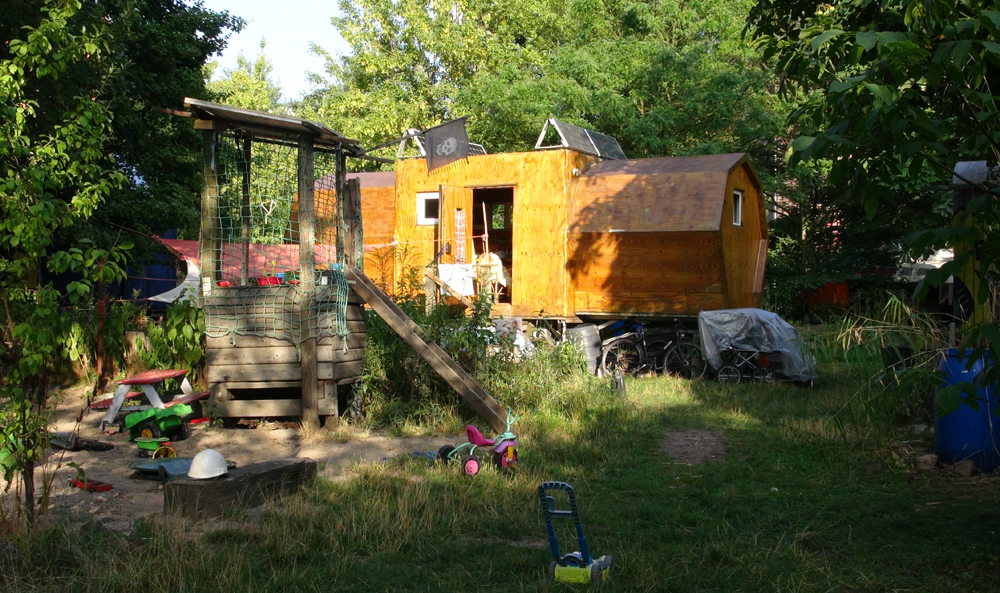A view from the street outside our house: a social centre has been tagged with “Free Gaza.” The street is in Gesundbrunnen the most multicultural kiez in Berlin (only 35 percent German). Gesundbrunnen was founded around a natural spring close to the Panke river and it was believed that it had healing properties. In the nineteenth century rapid development saw the construction of factories as well as neogothic and neoclasic architecture along the Panke. The construction of the factories caused the spring to dry up and an electric fountain now stands in its place.
A view of the Panke river as it flows through Gesundbrunnen. It could be somewhere in the wild but this beautiful spot is five minuets from our house and in the middle of one of Europe’s most populous cities. The red brick factories behind the Panke have long been decommissioned, and they are now mainly artist studios. The chimneys no longer belch black smoke but stand like odd towers, monuments to a bygone industrial age. For such a little river the Panke (29km) has its own history and traditions it even has its own folk dance, the Panke Polka. But these traditions are slowly being forgotten and the youngest member of the polka club is in her fifties.
Make love; why not? This potentially political banner hangs above a balcony in Neukölln.
“Happy Junior,”A chinese-vase juggler prepares to show his impressive skills during the Berlin street performance festival, while his “proud parents” look on. Plenty of magic shows, juggling and impressive acrobatics for all.
A mechanical, remote-control horse bends its head down so that the children may stroke it and enjoy their petting. Meanwhile the fire-breathing wing-flapping dragon reclines on a pedestal behind it.
Hot days. As over thirty degree heat strikes the city, Berlin residents cool off in what ever way they can, including the public fountains in Alexanderplatz.
Neptune watches while cranes work reshaping Berlin’s landscape, in a reminder of the constant development which is changing the city. Prices are skyrocketing and apartments are hard to come by as development pushes people out of what were once effordable enclaves. Even the flea-market shows signs of gentrification, no longer a place to find cheep stuff for your house, more a place to buy imported garments and gaudy trinkets.
In a similar vane the bonanza has clearly not helped everybody, this is not a view of a slum in Mumbai it is a slum in the heart of Berlin. With up to a hundred and fifty people and growing this 12,000 square metre area is packed with shacks and tents. It has one water pump but no proper sanitation or toilets, and cooking is done on open fires. Although the space is a positive social experiment and the fact that it has been left to grow by the authorities shows an unexpected tolerance. The fact that space in such a shanty town is in demand is a damning vision of Europe’s growing inequity.
This rather more bourgeois shanty town is located close-by, along the banks of the Kreutzberg canal. Here there are water tanks, solar power, comfortable looking caravans, gardens, a stage and a composting toilet system. There is also an open fireplace, and a bar. Established in 1991 built in the former no-mans-land between East and West. This community has thrived and maintained, a very different and undoubtedly more exclusive social experiment than the slum.










